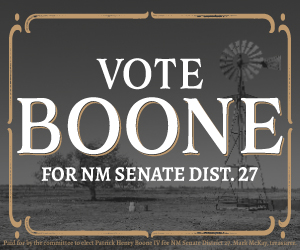Only in New Mexico | by Brandie Erisman
New Mexico is full of little towns, and even some big ones, with names that will make you stop and look twice… and then wonder, “WHAT were they thinking?” Many of the town names in New Mexico come from Spanish and Native American words, family names, land features, and a few misspellings. So while these names often make sense, in the end, you always have to wonder what, exactly, got lost in translation.
Here are a few of the more unusual New Mexico town names and the stories behind them.
Albuquerque
The short version of the Albuquerque story is that the city was named for the Spanish administrator and viceroy of Mexico, Francisco Fernández de la Cueva, Duke of Alburquerque. Note the second R in Alburquerque?
That R got dropped in the 1800s. The meaning of Alburquerque may be Arabic, meaning white oak.
Brilliant (Colfax County)
Like many places that are now ghost towns, this place was a mining town (Brilliant Mine 1906). Allegedly, the name comes from the brilliant luster of the local coal.
A nearby town was called Swastika, The swastika is a symbol used in cultures across the world. Before the bad guys got ahold of this symbol, it actually stood for things like abundance and prosperity — thus a fitting name for a mining camp (now a ghost town).
The town, however, changed its name to Brilliant II in 1940.
Carrizozo (Lincoln County)
This railroad town was originally called Carrizo Flats, named for the nearby Carrizo (or reed grass) River. The extra “zo” was added to signify the abundance of the area.
Chilili (Bernallio County)
Chilili is not a misspelling of “chili.” It is its own word, from a Pueblo language, meaning something like weak spring or barely trickling water.
Cleveland (Mora County)
Once San Antonio lo de Mora, this town changed its name to Cleveland in 1892 when it applied for a post office.
The name was chosen in honor of President Grover Cleveland.
Dusty & Polvadera (Socorro County)

Sometimes it seems that almost any city in New Mexico could be called “dusty,” but there are actually two towns that are named for being dusty places, both in Socorro County – Dusty and the nearby, Polvadera (the Spanish word for dusty). Both are unincorporated communities.
Las Trampas (Taos County)
No, the name doesn’t mean beaver. But the town could have been named after beaver traps (trampas). The town was christened after St. Thomas, Apostle of the River of Traps.
Pie Town (Catron County)
If you had to name a place after your best dish, what would it be? This pretty much sums up Pie Town’s name: a place with awesome pies.
Santa Fe
Since this is the state capital, you should know this one. Santa Fe means “holy faith.” Santa Fe’s full name, by the way, is La Villa Real de la Santa Fe de San Francisco de Asís. That translates to Royal Town of the Holy Faith of Saint Francis of Assisi.
Truth or Consequences

Yep, just like the old TV game show. Once called Hot Springs, the town voted to change its name to Truth or Consequences in 1950 after the TV show’s host, Ralph Edwards, said he would broadcast a show from a town willing name itself after the show. Keeping his promise, the show broadcast from Truth or Consequences, NM in April, 1950.
Tucumcari (Quay County)
There is a cute story behind this one! A chief’s daughter named Kari and her true love, Tocum, but it’s just not a true story. The name most likely comes from a Plains Indian word meaning lookout.
Questa (Taos County)
The name Questa is a corruption of cuesta, which means slope or hill. By the way, Questa was originally named San Antonio del Rio Colorado.





































